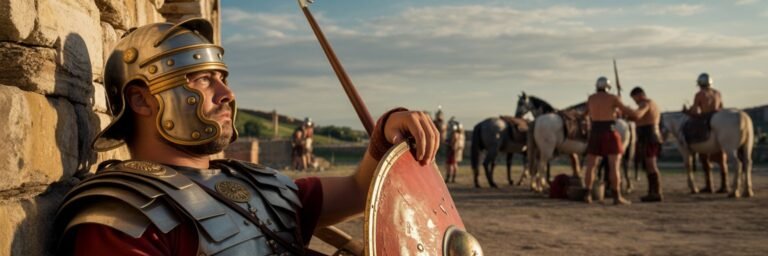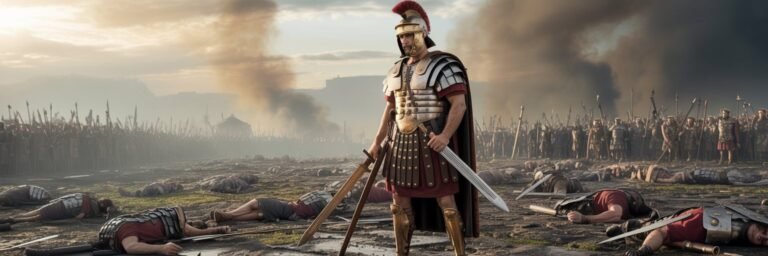INTRODUCTION
The turning gears of time have seen our species evolve from cave dwelling, hunter gatherers to high civilization builders. A significant catalyst in this evolution has been warfare. As harrowing and ghastly as the idea of battles and conflicts might seem, they have acted as necessary components in the formation of structured societies. To comprehend why and how ancient warfare came into existence, we must delve deep into the annals of history. As we undertake this journey, we’ll trace key transitions in the conduct of warfare, while exploring varied interpretations, mysteries, controversial moments, and the cultural symbolism associated with ancient warfare.
HISTORICAL BACKGROUND
Tranquil as the dawn of civilization might appear, beneath its serene exterior, lied the potent seed of warfare. The earliest known instance can be traced back to the Mesolithic rock art at Cave of Bacinete, Spain, which depicts scenes of hunting or warfare involving archers. The evolution of settled societies during the Neolithic Age further accelerated the prevalence of organized conflict.
One of the earliest documented wars is the war of Mesopotamia’s city-states Lagash and Umma circa 2525 BCE, mentioned in the “Stele of the Vultures”. Around the same time, warfare was also shaping the Nile valley, leading to the unification of Upper and Lower Egypt under the Pharaoh Narmer.
As we step into the Bronze Age, warfare became a craft than a mere survival strategy. The Epic of Gilgamesh and The Iliad provide details about the conduct of warfare during this era.
THEORIES AND INTERPRETATIONS
The reasons why ancient communities engaged in warfare range from territorial disputes, population pressure, assertion of political dominance, to acquisition of resources. This stems from Robert Carneiro’s Circumscription Theory and mirrors ideas presented by archaeologists, social anthropologists and complex society theorists.
An alternative theory by scholars like Ferguson challenges this view and proposes that warfare in prehistoric societies was largely sporadic and individualistic until structured societies sprung up. On the other hand, the ‘Human Behavioural Ecology’ theory posits warfare as an adaptive response to environmental changes.
MYSTERIES AND CONTROVERSIES
The study of ancient warfare is riddled with numerous mysteries, chief among them being the transition from non-lethal to lethal assaults. Explanations range from escalating feuds to technological advancements such as the invention of bows and arrows.
A controversial aspect of ancient warfare is the notion of “civilized” warfare. Some scholars, influenced by the ‘Noble Savage’ ideology, argue that indigenous societies engaged in ‘gentlemanly’ warfare where fatalities were negligible. Critics, however, deride this as a romanticized view, underscoring the inherent brutality of any form of warfare.
SYMBOLISM AND CULTURAL SIGNIFICANCE
Warfare in ancient societies was inextricably intertwined with their culture and religion. The Aztecs, for instance, saw warfare as a means of capturing POWs for ceremonial sacrifice to the gods. In contrast, the Spartans perceived warfare as the ultimate test of manhood and societal service.
Warfare signified more than mere conflict – it shaped mythology, rituals, and influenced societal norms. Ancient literature, from the Hindu epic Mahabharata to Homer’s Iliad, are filled with war narratives, demonstrating how deeply ingrained warfare was in shaping cultural expression.
MODERN INVESTIGATIONS
Modern archaeological and anthropological investigations have further bolstered our understanding of ancient warfare. The excavations at the hill fort of Maiden Castle, England, unveiled a brutal Iron Age battle. DNA analysis of the 3,000-year-old ‘Tarim mummies’ challenges the long-held belief in the peacefulness of the early Bronze Age communities in China.
In Peru, the study of skeletal remains and tools from the ancient site of Marcavalle has shed light on warfare practice as early as 3,000 BC. These instances exemplify how modern scientific methods enable us to connect the dots and piece together the tactics, weaponry, and realities of ancient warfare.
LEGACY AND CONCLUSION
The imprints of ancient warfare continue to echo in our modern world. Tactics such as the ‘Phalanx’ used by the ancient Greeks lay the groundwork for contemporary military formations. The ancient art of siege warfare set the stage for modern military engineering.
The profound symbolism associated with warfare continues to permeate today’s socio-cultural fabric. Literature and media are replete with narratives of war, heroic warriors and strategic battles, revealing our enduring fascination with this historical construct.
Conclusively, the narrative of ancient warfare is far from a concluded chapter. It is a vast, complex tapestry that we continue to unravel, which allows us to comprehend not just our tumultuous past, but the present and potentially, the future. War might be a grim aspect of human civilization, but its analysis yields rich insights into our development and character as a species. It hints at our capacity for strategic thinking, bravery, innovation and sacrifice – attributes that continue to define us today.


